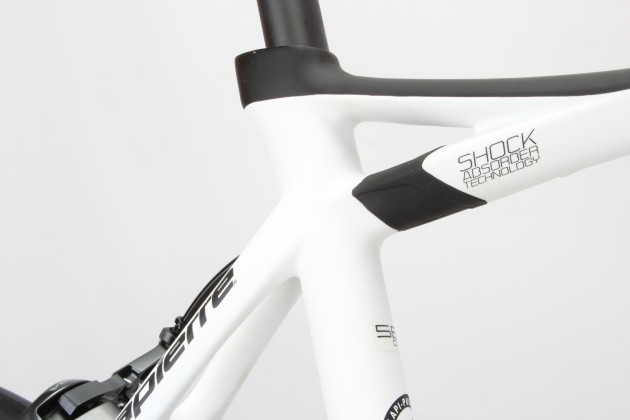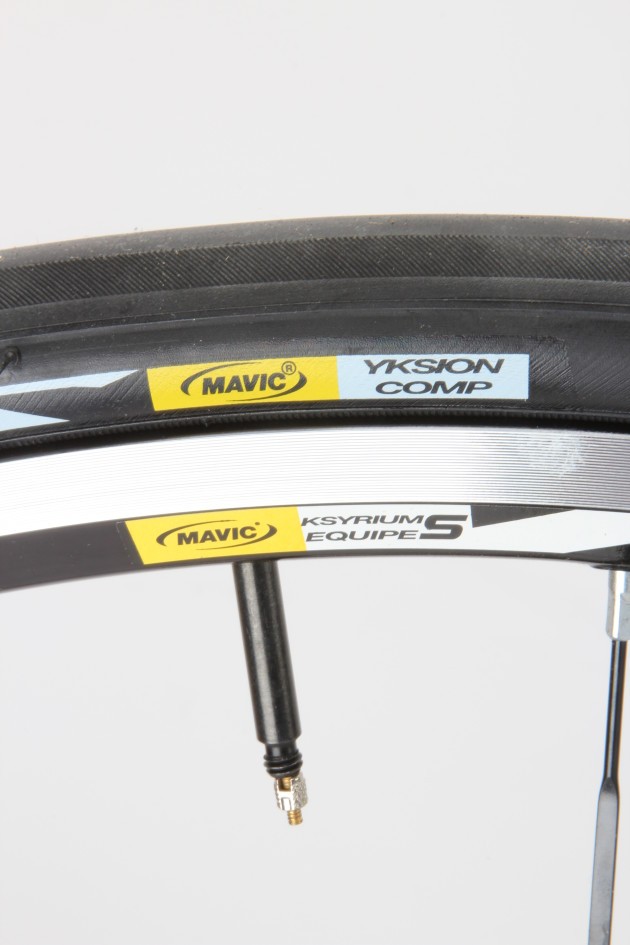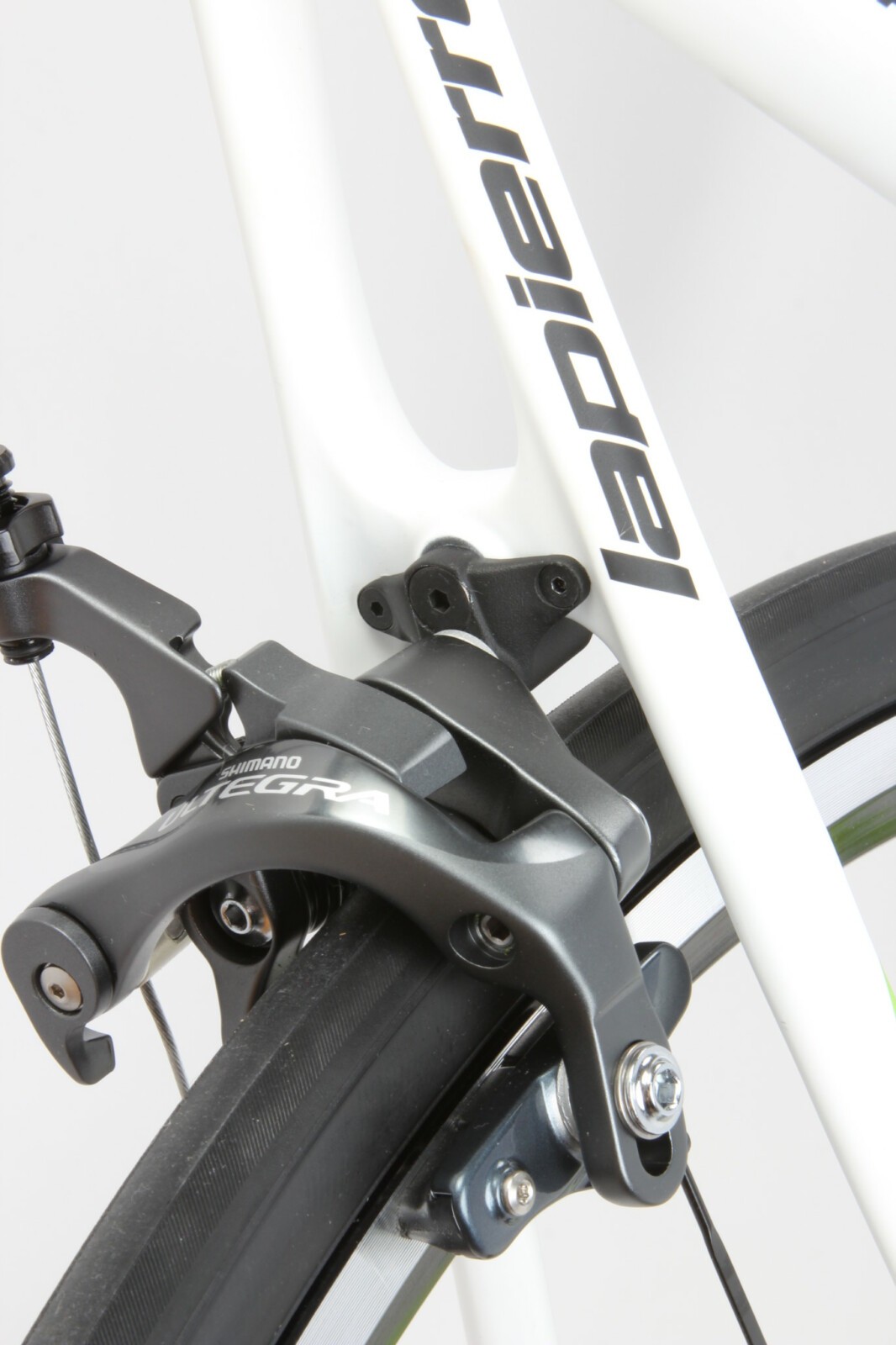Since 1946 Lapierre has been designing and creating bikes from their base in Dijon, France however the company is now owned by the large publicly listed Accell group out of the Netherlands. Accell focuses mainly on cycling and owns brands like Koga, Ghost, and Diamondback. The modern day Lapierres are manufactured in China, and some models are assembled in France.
While Lapierre sponsors the Française des Jeux WorldTour team with their Xelius and Aircode bikes for competition on the blacktop, the Pulsium is their bike of choice for the cobbles and FDJ raced them in the Spring Classics including Paris Roubaix.

The Pulsium has a sleek elegance about it with flowing curved tubes, slender seat stays, a powerful looking mid-section and a curvaceous fork. Weighing in at 7.84kg the 700 is respectably light for an extra-large sized frame.
The most notable feature of the frame is the top tube which branches into two about 10cm forward of the seat post with an upper and a lower section. The upper section continues the width of the top tube in a broad flat carbon section while the lower section is interrupted by an elastomer, that goes on to join the seat tube. The section of rubber you can see is just an aesthetic sheath but the inner workings comprise an elastomer damper between a male/female joint that allows around 3mm of movement. Lapierre call the system SAT (shock absorption technology). It’s designed to damp vibrations from the seat stays and allow some deflection in the seat tube.

The French have a long history of radical engineering with a certain savoir faire—with bona fide success stories like the TGV – their high speed train, the iconic Concorde and even the classical steel monument of the Parisian skyline, the Eifel Tower. But in the bike world Lapierre are not the first to integrate elastomers in their frames; Specialized has their Zertz inserts in seat stays and forks, while lately in a quest for a cushier ride Trek’s Domane line up uses their Isospeed decoupler, and more recently still Pinarello has developed a cobble specific version of their Dogma with an elastomer shock at the top of the seat stays, a bit like an old school titanium Moots MTB.
The comfort factor isn’t only derived from the SAT link, there are several aspects of the Pulsium’s design that moderate vibrations transmitted to the rider.
And of course the goal here is to deliver the rider to the finish of the ride in the best shape possible, unfatigued and ready to sprint should that be required.
The wavy fork has extra rake and the seatpost is a slender 27.2mm carbon unit, both used for a little more deflection. Slim curved seat stays add some leaf spring action, while the slightly lengthened chain stays add stability and the carbon layup and carbon grade have been strategically chosen to deliver greater flex capability of the tubes—with a lower chance of breakage and a very smooth riding result.

The Pulsium isn’t all about comfort though. Endowed with the same ‘powerbox’ design as the Xelius with its sturdy headtube, down tube, bottom bracket and chainstay section, it performs in much the same way out of the saddle in sprints and punching over small rises. In fact Lapierre claim identical lateral stiffness between the two. Inasmuch as you can glean tangible information about ‘on the road’ ride feel from any geometry table, the Pulsium is actually not far removed from its race bred cousin the Xelius. In this XL sized frame it’s 20mm taller in its 72.5 degree head tube, and 8mm longer in the chainstays, though stack and reach are marginally different; only 9mm taller and 3mm shorter respectively than the equivalent sized Xelius. So for what it’s worth, on paper, it leans marginally more towards comfort and endurance, but these specs are also slightly more race oriented than the endurance models of the big three manufacturers.
Out on high speed flat roads the Pulsium feels like a limousine, wind it up to speed and settle in for the long haul. It covers ground with ease and makes a long ride all the more enjoyable. Descending one of our local hills the Pulsium is well mannered on the rough surface of rugged sections of repaired potholes, remaining composed and on track. It soaks up coarse road buzz, and takes the edge off bigger hits of broken tarmac and small potholes. At the same time it manages to stay well connected to the road, tracking nicely through the bumpy corners. The amount of shock absorption feels well balanced with both your hands and rear end benefitting. On smooth descents it holds its line carving fast turns predictably and with ease. The longer stays deliver plenty of traction while climbing, something you could do all day long with the compact cranks and 11-32 cassette.

Lapierre maintains the French connection choosing Mavic Ksyrium Equipe wheels and Yksion Comp tyres for the 700. Given the direction of this endurance machine the rims are a little narrow and won’t realise the full potential of wider tyres and intent of the Pulsium.
Lapierre has taken some time to address issues of a bike ridden on rough roads in tyre size and noise reduction. The bike is virtually silent even when on rough roads, which is not common in these days of internally routed cables that often rattle and slap inside the frame.

Summing up
Quality
Sporting a full Ultegra Di2 groupset and Zipp components the Pulsium 700 is very well equipped. The wheelset while reasonable, is probably the low point. But this bike is really all about the frame. Its finishing and cable routing is very good. It’s well designed, and delivers on its promise.
Value
Many brands are looking at innovative design in the endurance category, but there’s no question this frame delivers a comfortable and efficient ride. The R&D comes at a cost though that should be considered. With an RRP of $5,499 the frame quality and groupset will see the Pulsium 700 regarded, not only by Francophiles, as good value.
Performance
The 700’s component spec is all high end, braking is gratifying without the use of discs, and the Di2 gear changing a pleasure. Ask the question and the Pulsium responds in the affirmative. It takes rough roads in its stride while performing admirably on smooth.
Overall
The Pulsium is an elegant and composed rough road flyer, endowed with capacity to cover ground at speed with ease. It will climb and descend well and is stiff enough to compete in the bunch but its forte is performing well on long haul rides so you can ride faster for longer.

SPECIFICATIONS
Frame: Pulsium Carbon
Fork: Lapierre Pulsium Carbon
Shifters: Shimano Ultegra Di2
Front Derailleur: Shimano Ultegra Di2
Rear Derailleur: Shimano Ultegra Di2 11-Speed
Crankset: Shimano Ultegra 50×34 175mm
Cassette: Shimano Ultegra 11-Speed 11-32t
Bottom Bracket: Shimano Pressfit
Wheel: Mavic Ksyrium Equipe Wts
Tyres: Mavic Yksion Comp 25
Brakes: Shimano Ultegra
Handlebar: Zipp Service Course 80 440mm
Stem: Zipp Service Course 6° 120mm
Headset: Fsa 1″1/8 1″1/4
Saddle: Fizik Aliante Delta Mg
Seatpost: Lapierre Carbon 350mm Dia:27,2mm
Weight: 7.84kg
Price: $5,499
Distributor: Advance Traders www.lapierrebikes.com.au

